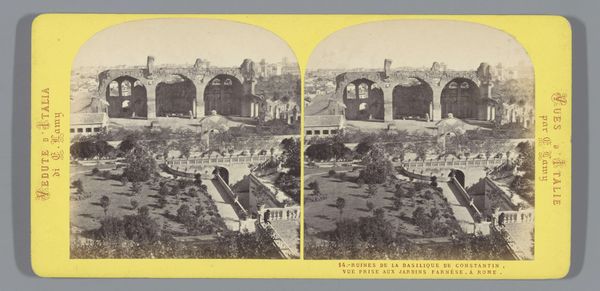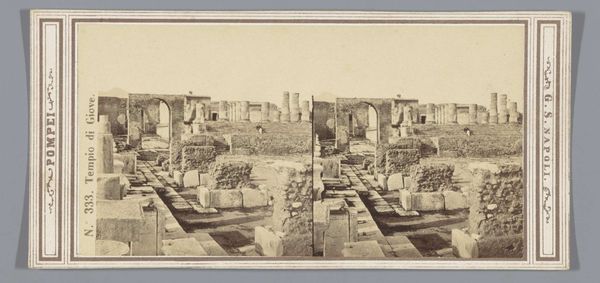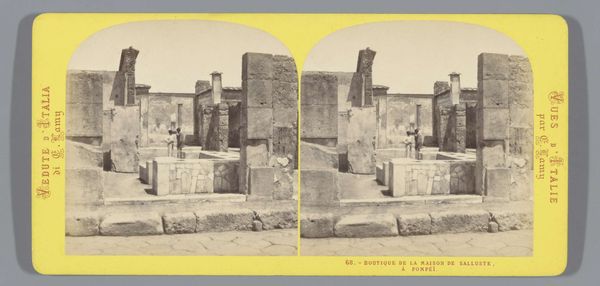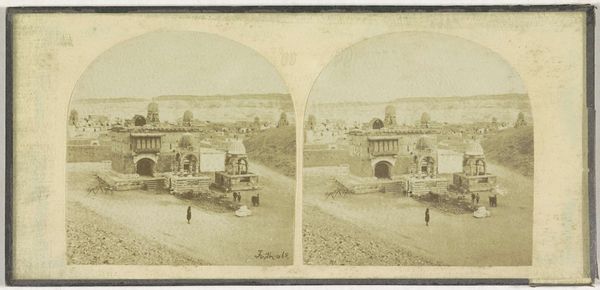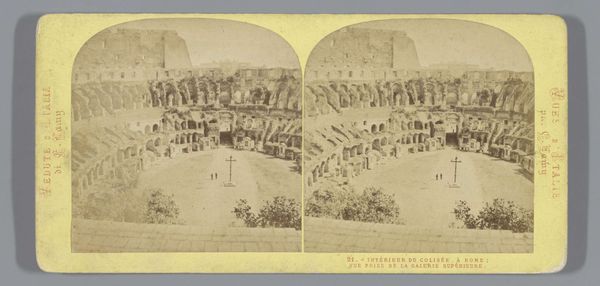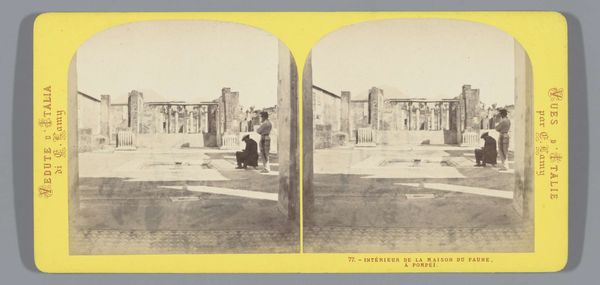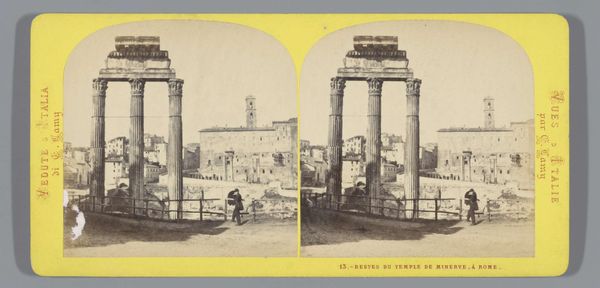
photography, gelatin-silver-print
#
landscape
#
photography
#
coloured pencil
#
gelatin-silver-print
Dimensions: height 87 mm, width 178 mm
Copyright: Rijks Museum: Open Domain
Editor: This gelatin-silver print, "Boog van Tiberius op het Forum van Pompeï," taken by Ernest Eléonor Pierre Lamy between 1861 and 1878, presents a view of the ruins. I'm immediately struck by the geometry of the composition; the way the paving stones lead the eye towards the archway is quite powerful. How do you interpret this work? Curator: The success of this piece rests heavily on its arrangement of forms. Note how the photographer uses a stereoscopic view to enhance depth. The contrasting textures – the rough stonework versus the relatively smooth walkway – create a visually stimulating surface. Editor: That's interesting. I hadn't considered the texture. Does the light also play a role? Curator: Certainly. The even lighting, almost devoid of dramatic shadows, allows for a uniform study of the architecture. Light isn't used here to create drama, but to reveal the intrinsic form. Look closely at the columns; the details of their fluting are meticulously captured. Editor: So, it’s less about the specific subject matter and more about how the photograph is constructed? Curator: Precisely. It is a system of lines, shapes, and tones organized to create an image of balance and order. Semiotically, each element refers back to the architectural structure itself. Editor: I see! The focus is on the architectural elements themselves. I hadn't considered analyzing it that way. Curator: Considering its aesthetic design reveals far more. Editor: It’s given me a whole new perspective. I’ll definitely be paying more attention to formal elements from now on.
Comments
No comments
Be the first to comment and join the conversation on the ultimate creative platform.
